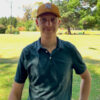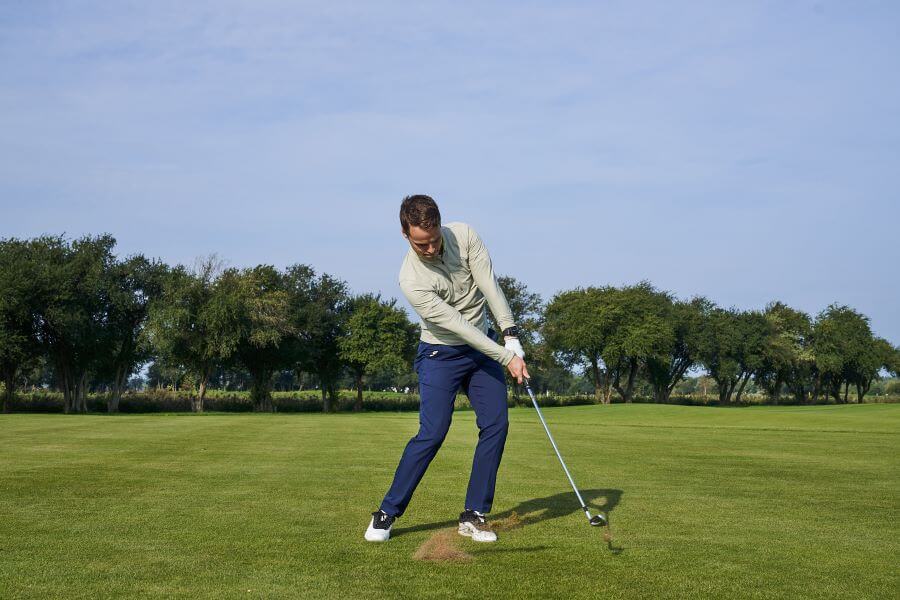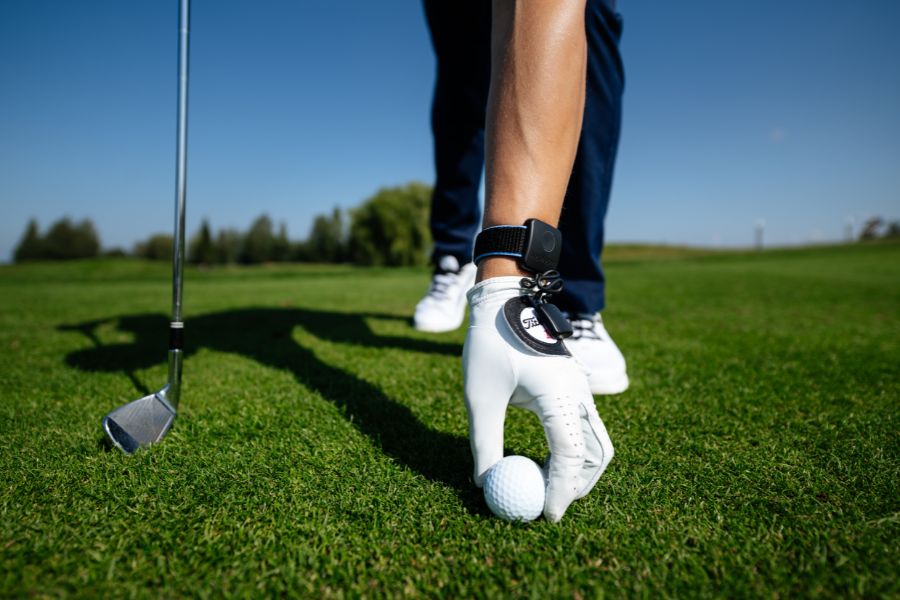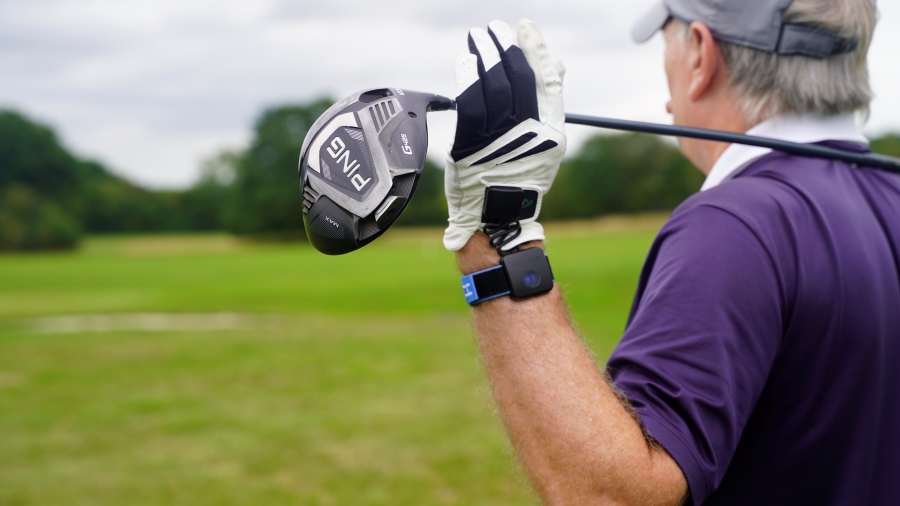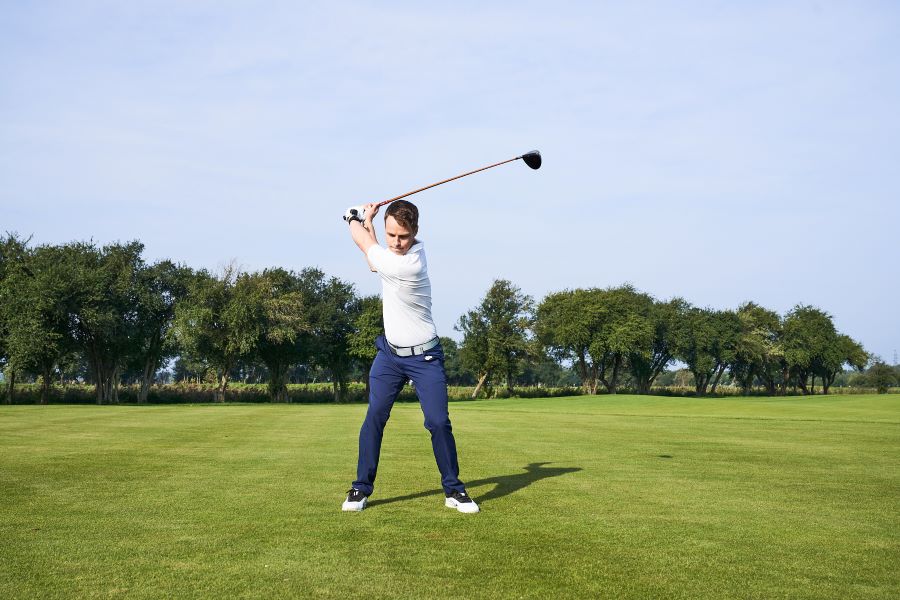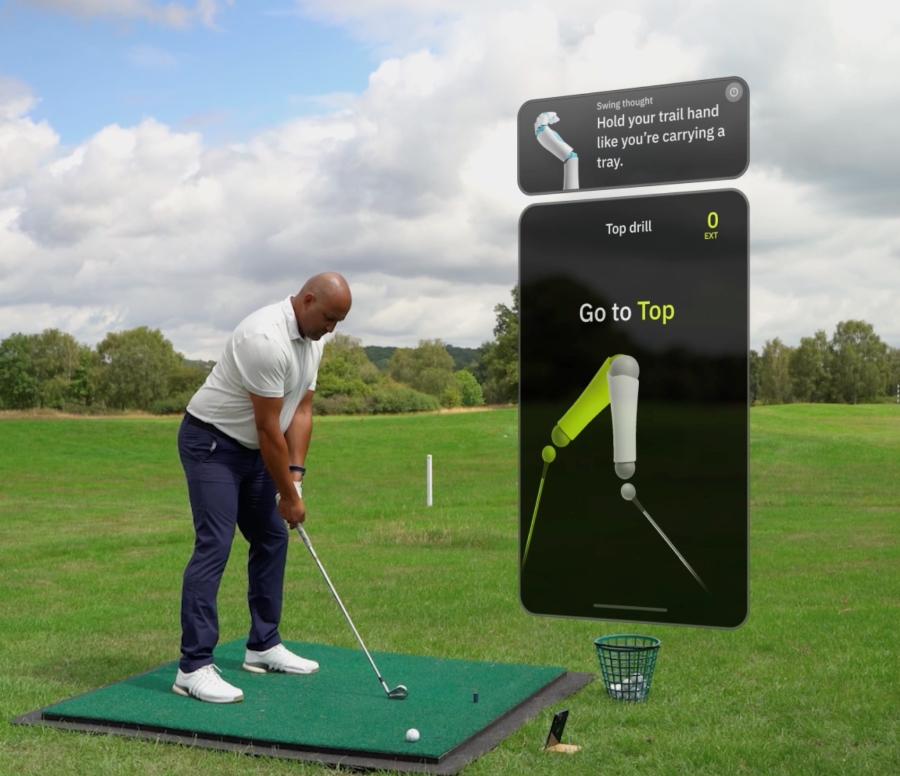How to Put Backspin on a Golf Ball: Step-by-Step Guide & Drills
Backspin isn’t just for the pros; it’s about control.
To create it, you need clean grooves, the right ball, and most importantly, the correct wrist angles at impact.
A flexed lead wrist helps compress the ball and generate the spin needed to stop it quickly.
With HackMotion, you can measure and train those wrist angles, making it easier to turn good wedge swings into high-spinning shots that hold the green.
Backspin in Golf (Key Takeaways)
If you don’t have time to read our entire guide on how to put backspin on a ball, here are the key factors that you need to know.
- To put backspin on a ball you need clean grooves on the club to improve the interaction with the golf clubface and the ball.
- The angle of attack and lead wrist position have to allow you to hit down and through the shot in order to get the ball spinning backward.
- The golf ball and wedges you use will impact your ability to generate backspin.
- Anytime you are able to drive through a golf shot with consistent speed and rotation, it’s easier to generate backspin; this is why faster swing speed players can generate quite a bit of spin.
Contents
Quick Guide: How to Put Backspin on a Golf Ball
Backspin comes from clean, crisp, fast contact: a dry clubface and ball, a slight descending strike, and a flexed lead wrist through impact so you compress the ball and create friction.
HackMotion helps you measure and train that wrist position so you stop flipping and start spinning.
Step-by-Step: Create Backspin (Fast)
- Clean it up – Dry the clubface and ball; brush grooves. Moisture and dirt kill friction.
- Use a spinny ball – Urethane-cover golf balls (e.g., your “tour” model) generate more wedge spin.
- Pick the right lie – Fairway/short grass is ideal; heavy rough or wet lies reduce spin.
- Set your stance – Slightly open stance, ~55–60% weight on lead foot. Keep posture athletic.
- Clubface & handle – Slightly open the face, hands just ahead of the ball. Feel a flat-to-flexed lead wrist.
- Ball-first contact – Aim for ball, then turf. A small divot after the ball means a descending blow.
- Rotate and accelerate – Turn around the lead leg and keep speed through impact (don’t decel).
- Train the wrist with HackMotion – Use audio feedback to avoid lead-wrist extension at impact. If the tone triggers early, you’re flipping; hold flexion through strike.
- Finish controlled – Hold your chest to the target with a compact, balanced finish—no scooping.
7 Proven Ways to Get Backspin on a Golf Ball
1. Clean and Dry Grooves
Your grooves must be clean and dry to achieve spin.
When your wedge grooves are dirty or covered in moisture, you can’t make clean contact with the golf ball, reducing friction and backspin.
Testing has been done to show that wet golf balls, especially those hit from wet grass simply do not spin as much.
Wipe your grooves before and after each shot to dislodge any mud or debris from the cracks. Old wedges with withered grooves will also struggle to generate higher levels of backspin.
2. Pick the Right Golf Ball
In addition to having clean grooves, you will want to put the correct golf ball into play.
Something like a Titleist Pro V1 or a Callaway Chrome Soft will make it much easier for you to generate spin than a golf ball with only two pieces like the Callaway Supersoft.
The basic rule of thumb here is that premium golf balls with urethane covers generate more spin.
3. Get the Wrist Angles Right
Wrist angles in golf can get complicated. However, there is one consistency that we see with great ball strikers.
That position is a flexed lead wrist as the golf club approaches impact. The flex in the wrist creates forward shaft lean, improves compression and strike, and therefore results in more backspin for a player.

Of course, too much flexion can have a negative effect on the shot, but for most golfers, it’s the issue of too much extension that can cause a lack of backspin.
If you want to work on getting more flexion in your lead wrist, compressing the ball, and hitting cleaner shots, here’s a great drill to work on.
The HackMotion is the perfect tool for measuring your wrist angles and determining if the incorrect impact position could be causing your lack of spin.
4. Open Your Stance
When you are close to the green and want to increase spin, try opening the stance. This approach, often used by players like Rickie Fowler, positions the feet slightly open to the target line.
The setup encourages added rotation around the lead leg through impact, which helps keep the clubface open and drive the club under the ball.
Setting up square to the target can sometimes restrict rotation, making it harder to produce spin. A square stance can still generate backspin on full-swing approach shots, but the rates are typically a little lower.
5. Open Clubface at Address
Another method for the shorter shots includes opening the clubface a bit at address.
The proper impact position requires you to square or close the clubface, leading into contact. If you set up with a face a little open, you have a higher chance of hitting a high spinning shot.
I find the open clubface also helps me visualize where I want my clubface before impact to get under the ball and increase friction. An open clubface should help increase the overall height of the shot and actually increase the ball’s ability to stop on the green.
6. More Weight on Lead Leg
Placing about 55% of your weight on the lead leg promotes a downward strike and cleaner compression, which are key to producing backspin.
This forward weight helps the clubface stay in the impact zone longer, giving the grooves more time to interact with the ball.
When setting up, feel as though your belt buckle is positioned over your lead foot. Maintain that weight throughout the swing to encourage a consistent strike and maximize friction for spin.
7. Rotate Around Lead Leg
Rotating around the lead leg helps maintain momentum through impact and keeps the clubface slightly delofted, which is essential for generating backspin.
When rotation stalls, the club is more likely to catch the ball thin, sending it across the green with little to no spin.
A full turn around the lead side ensures clean contact, compression, and the stopping power needed on wedge shots.
Additional Drills to Create Backspin on a Golf Ball
The fastest way to learn how to generate backspin is to train the correct wrist mechanics. HackMotion provides real-time feedback on whether your lead wrist is flexed, extended, or stable giving you the ability to correct mistakes instantly
Try these three drills to build spin-producing contact.
Motorcycle Drill
The Motorcycle Drill teaches you to add lead wrist flexion in the downswing, a must for compressing the ball and creating backspin.
Most amateurs flip into extension, which reduces friction and spin. With HackMotion, you’ll hear or see exactly when your wrist angle moves out of position.
Motorcycle Drill – Master Wrist Flexion in the Downswing
Focus on continuously adding flexion until the club reaches parallel, then smoothly complete your swing.
HackMotion Motorcycle Drill – Step by Step
- Set up normally with HackMotion on your lead wrist.
- Start the downswing and “rev the motorcycle” by bowing the lead wrist.
- Maintain that flexion through impact for a delofted, spin-friendly strike.
- Use HackMotion audio feedback to confirm you don’t flip into extension.
Release Drill
The Release Drill helps players who struggle with scooping or weak contact.
By shortening the swing and focusing on the release zone, you can train your wrists to stay stable and your hands to remain forward through impact. HackMotion verifies that your lead wrist stays flexed at strike.
HackMotion Release Drill – Step by Step
- Take a shorter swing from club parallel back to club parallel through.
- Keep the hands slightly ahead of the ball at impact.
- Use HackMotion to check your lead wrist angle in the “green zone.”
- Once consistent, gradually add more speed and length.
Transition Drill
Backspin requires not only proper impact but also good sequencing.
The Transition Drill links body rotation with wrist control, helping you store power and deliver a downward strike. With HackMotion, you’ll see if your wrists are staying stable or breaking down early in the downswing.
Transition Drill in HackMotion
Master your sequencing and pivot to improve your swing efficiency and control.
HackMotion Transition Drill – Step by Step
- Set up as in the Release Drill, but make a slightly longer backswing.
- Transition smoothly by shifting weight to the lead side while keeping the trail wrist bent.
- Swing through with hands forward and wrists stable.
- Monitor HackMotion graphs to ensure your angles stay in the green zone.
FAQs
What is backspin in golf?
The best way to think of backspin is to think about how the golf ball travels forward, but as it travels, it spins backwards. The more backspin a ball carries, the shorter it travels and the softer it lands.
That’s ideal for short game shots where you aim to attack the flag and stop the ball near your target.
Is it difficult to generate backspin on a golf ball?
To generate backspin on a golf ball you have to use loft and a downward angle of attack. This process gets the ball to stop on the green and sometimes even back up a bit.
What factors impact the amount of backspin you can generate?
In addition to ensuring you have the proper angle of attack on your golf ball, it’s also essential to play with the proper equipment (golf ball and wedge) and to make sure your lie sets you up for spin. Clean lies from the fairway are ideal for generating backspin.
What causes backspin on a golf ball?
When the golf ball and golf club strike, the golf ball slides off the clubface. The force of the friction opposes that motion, pushing downwards on the ball.
Why do you need backspin?
You need backspin to help you control the golf ball around the green to attack flagsticks and get up and down. Without backspin, your ball lands and rolls forward a few feet, and reduces your control around the greens.
How do you control backspin?
Control backspin by adjusting the loft on my clubface and wrist angles into impact. If you decrease loft you will decrease backspin. Also make sure you are playing with the right equipment to reduce backspin.
Final Thoughts
After reading our detailed guide, you now know how to put backspin on a golf ball.
An open clubface at contact with the correct wrist angles and a steeper angle of descent will get you the position you need.
The HackMotion offers the most clarity and understanding of wrist positions from address through impact.


